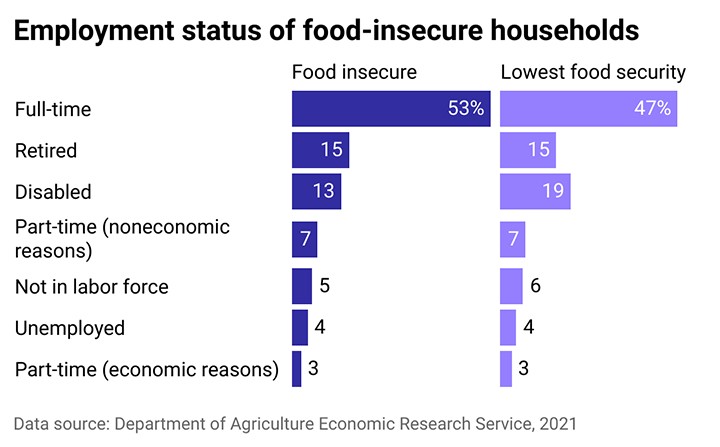1 minute reading time
(224 words)
Challenging perceptions: "Why don't food-insecure people just get a job?"
Perceptions and reality don't always match up. You might be surprised to learn that 53% of food-insecure people work full-time.
So, the suggestion "Why don't they just get a job?" falls flat for more than half the people choosing between putting gas in their car, paying a utility bill, or going to the grocery store.
So, the suggestion "Why don't they just get a job?" falls flat for more than half the people choosing between putting gas in their car, paying a utility bill, or going to the grocery store.
The USDA defines food insecurity as the "lack of consistent access to enough food for an active, healthy lifestyle."
And as the numbers show, full-time employment doesn't guarantee food security as the cost of living increases and the paycheck does not.
And as the numbers show, full-time employment doesn't guarantee food security as the cost of living increases and the paycheck does not.
The acronym ALICE - asset limited, income constrained, employed - describes this scenario. These households are above the poverty line but struggle to cover the costs of housing, food, childcare, healthcare, and transportation simultaneously.
This is where the work of Midwest Food Bank comes into the picture. We bridge that gap. In 2022, MFB distributed $415 million of food at no cost to our nonprofit partners. Those nonprofit partners are on the front lines, giving that food directly to people that need it. That includes the 53% of people that work full-time.
In understanding food insecurity, MFB wants to best serve those in need in our communities. We want our volunteers and donors to understand, too. Together we can share the blessings.
Stay Informed
When you subscribe to the blog, we will send you an e-mail when there are new updates on the site so you wouldn't miss them.

